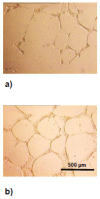Endothelial Cell Participation in Inflammatory Reaction
- PMID: 34199319
- PMCID: PMC8231964
- DOI: 10.3390/ijms22126341
Endothelial Cell Participation in Inflammatory Reaction
Abstract
Inflammation is an old concept that has started to be considered as an important factor in infection and chronic diseases. The role of leukocytes, the plasmatic components, then of the mediators such as prostaglandins, cytokines, and, in recent decades, of the endothelium has completed the concept of the inflammation process. The function of the endothelium appeared to be crucial as a regulator or the initiator of the inflammatory process. Culture of human endothelial cells and experimental systems made it possible to define the molecular basis of inflammation in vascular diseases, in diabetes mellitus, atherosclerosis, vasculitis and thromboembolic complications. Advanced glycation end product receptor (RAGE), present on endothelial cells (ECs) and monocytes, participates in the activation of these cells in inflammatory conditions. Inflammasome is a cytosolic multiprotein that controls the response to diverse microorganisms. It is positively regulated by stimulator of interferon response CGAMP interactor-1 (STING1). Angiogenesis and thrombotic events are dysregulated during inflammation. ECs appear to be a protector, but also a possible initiator of thrombosis.
Keywords: SARS-CoV-2; angiogenesis; endothelial cells; inflammasome; inflammation; thrombosis.
Conflict of interest statement
The authors declare no conflict of interest.
Figures




References
-
- Sakuta M. One hundred books which built up neurology (36)—Cruveilhier “Medecine Pratique” (1821), “Traite D’Anatomie Descriptive” (1851) Brain Nerve. 2009;61:1436–1437. - PubMed
Publication types
MeSH terms
Substances
LinkOut - more resources
Full Text Sources
Medical
Research Materials
Miscellaneous

